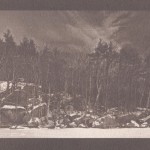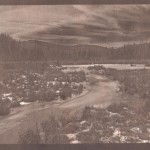Warning… photographer talk ahead!!!
Dodging and burning are terms that describe making local adjustments to a photograph during the making of a print. Dodging is the process of selectively lightening an area. Burning is the opposite; selective darkening.
In the days of yore, when working in the darkroom, dodging and burning were done one print at a time. One manipulated the light falling on the photographic paper as one exposed the print. Master printers were able to make these adjustments with a fair amount of precision, but there was always some print-to-print variability even with the best printers.
For the UV sensitive contact printing processes (e.g. cyanotype, salted-paper printing, et al.), dodging and burning were not practical for a number of reasons. The main one being that there is necessarily little space between the light source and the print. Thus one’s ability to see where you were attempting to dodge or burn was limited and thus imprecise.
Using digital negatives to make contact prints has changed all of this. By making adjustments to the digital file we can make very localized adjustments that are “frozen” when one make the digital negative. Thus, one gets the same adjustments in each print when one makes a contact print. Furthermore, since those adjustments are made in the negative, one can apply them to the UV sensitive contact printing processes without the need to actually get one’s hands in the space between the light and the paper.
With experience, one’s first draft of a digital negative is usually pretty close to ideal, but after one makes that first print from a negative you often see that a small amount of fine tuning is necessary. Thus, one goes back to the computer to make a few tweaks to the image before printing a revised negative and making another print. I probably make second drafts of about half of my negatives. It is very rare that I need to make a third draft these days.
The four images show below are examples of the end result of this process. I had made initial prints of these images previously but each of them needed a bit or dodging and burning to be ‘perfect’. I made those adjustments and printed new negatives on Saturday. Yesterday, I made new salted-paper prints using those negatives.
The differences between the two drafts were small. A bit of burning in (darkening) on the shoulder of the marmot. Similar adjustments on the lily pad in the second photo and the dead tree to the right of the gate in the last photo.. The third image had a bit of dodging (lightening) of the pinecone and a bit burning in of the lightest leaves throughout.
The resulting prints are, to my eye, subtly but significantly improved over the initial prints.
[scrollGallery id=765 – autoscroll = false width = 600 height = 600 useCaptions = true]


